
Roots
Consider the quiet strength held within a single strand of textured hair, a filament carrying echoes of ancestral wisdom, resilient through generations. How might the gentle pigments of the earth, once prepared by hands steeped in tradition, offer a different kind of vibrancy today? This query leads us back to fundamental understandings, to the very structure of hair and the botanical world that has long offered its hues. We begin by looking at the foundations, the very building blocks that allow such connections to form, acknowledging that hair, in its intricate construction, holds secrets to how it accepts and displays color.

The Architecture of Textured Hair
Textured hair, with its remarkable diversity of curl patterns, coils, and waves, possesses a unique architecture. Unlike straight strands, which often present a relatively smooth, even surface, the cuticle layers of textured hair tend to be more lifted or uneven along the shaft. This structural characteristic, while contributing to its visual splendor and volume, also influences its interaction with external agents, including colorants.
The cuticle, the outermost protective layer, acts as a gatekeeper, determining how readily moisture and pigments can enter or leave the hair’s inner cortex. A strand with higher porosity, where these cuticle scales are more open, might absorb substances quickly but also release them with similar speed, affecting color retention.
Beneath the cuticle lies the cortex, the primary component of the hair shaft, providing its strength and elasticity. This is where melanin, the natural pigment responsible for hair color, resides. Plant-derived dyes, such as lawsone from henna or indoxyl from indigo, interact with the keratin proteins within this cortex and on the cuticle surface.
The way these botanical molecules bind to the hair’s natural protein structures differs significantly from synthetic chemical dyes, which often require harsher agents to lift the cuticle and alter the melanin itself. This distinction is paramount when considering the gentler, conditioning effects often associated with traditional plant applications.
Textured hair’s unique cuticle structure profoundly shapes its interaction with plant-derived colorants, influencing absorption and retention.

Ancient Plant Pigments and Their Histories
For millennia, communities across continents have turned to the botanical realm for personal adornment and expression, including hair coloring. The practice was not merely aesthetic; it often held deep cultural, spiritual, and medicinal significance. In North Africa and parts of the Middle East, for instance, henna (Lawsonia inermis) has been a cornerstone of beauty rituals, its reddish-orange pigment gracing hands, feet, and hair for celebrations and rites of passage. Its leaves, when dried and powdered, release lawsone, a molecule that bonds with the keratin protein in hair, leaving a lasting stain.
Similarly, in India, the application of henna, often paired with indigo (Indigofera tinctoria) to achieve darker, richer shades, formed part of elaborate ceremonies, symbolizing beauty and well-being. The use of these plant-based pigments was a skilled practice, passed down through oral traditions, each region adding its unique touch through local botanicals and preparation methods. Beyond the prominent henna and indigo, other plants like amla (Emblica officinalis) were used for their conditioning properties and their ability to subtly influence color, sometimes helping to deepen darker tones or add a cooling cast. The knowledge surrounding these applications was holistic, encompassing not only the dyeing process but also the preparation of the hair and scalp, often involving herbal washes and conditioning treatments.

What is Hair Porosity and Why Does It Matter for Plant Dyes?
Hair porosity refers to the hair’s ability to absorb and hold moisture, which directly impacts how it responds to hair dyes. The outer layer of the hair shaft, the cuticle, consists of overlapping scales. When these scales lie flat, the hair has Low Porosity, resisting water and product penetration.
Conversely, when the scales are raised or damaged, the hair exhibits High Porosity, allowing substances to enter and exit rapidly. Textured hair, due to its natural curl patterns and often finer cuticle layers, can naturally possess higher porosity, or it can become highly porous through styling practices or chemical treatments.
For plant dyes, understanding porosity is vital. Plant pigments, such as lawsone, typically deposit onto the outer layers of the hair and bind to the keratin, rather than penetrating deeply into the cortex like many synthetic dyes. High porosity hair might absorb plant dyes more quickly, leading to intense initial color, but it may also experience faster fading as the pigments escape through the open cuticles.
Low porosity hair, on the other hand, might require longer processing times or gentle heat to encourage the cuticle to open and allow the plant pigments to settle. This interplay between hair structure and dye chemistry is a fundamental consideration for achieving successful and lasting results with plant-based colorants on textured hair.
| Porosity Type Low Porosity |
| Cuticle Condition Tightly packed, flat |
| Plant Dye Absorption Slower, may need warmth |
| Color Retention Good, once absorbed |
| Porosity Type Medium Porosity |
| Cuticle Condition Slightly raised, flexible |
| Plant Dye Absorption Good, balanced |
| Color Retention Excellent |
| Porosity Type High Porosity |
| Cuticle Condition Raised, chipped, or missing |
| Plant Dye Absorption Rapid, often over-absorption |
| Color Retention Faster fading |
| Porosity Type Understanding hair porosity is essential for optimizing plant dye application and longevity. |
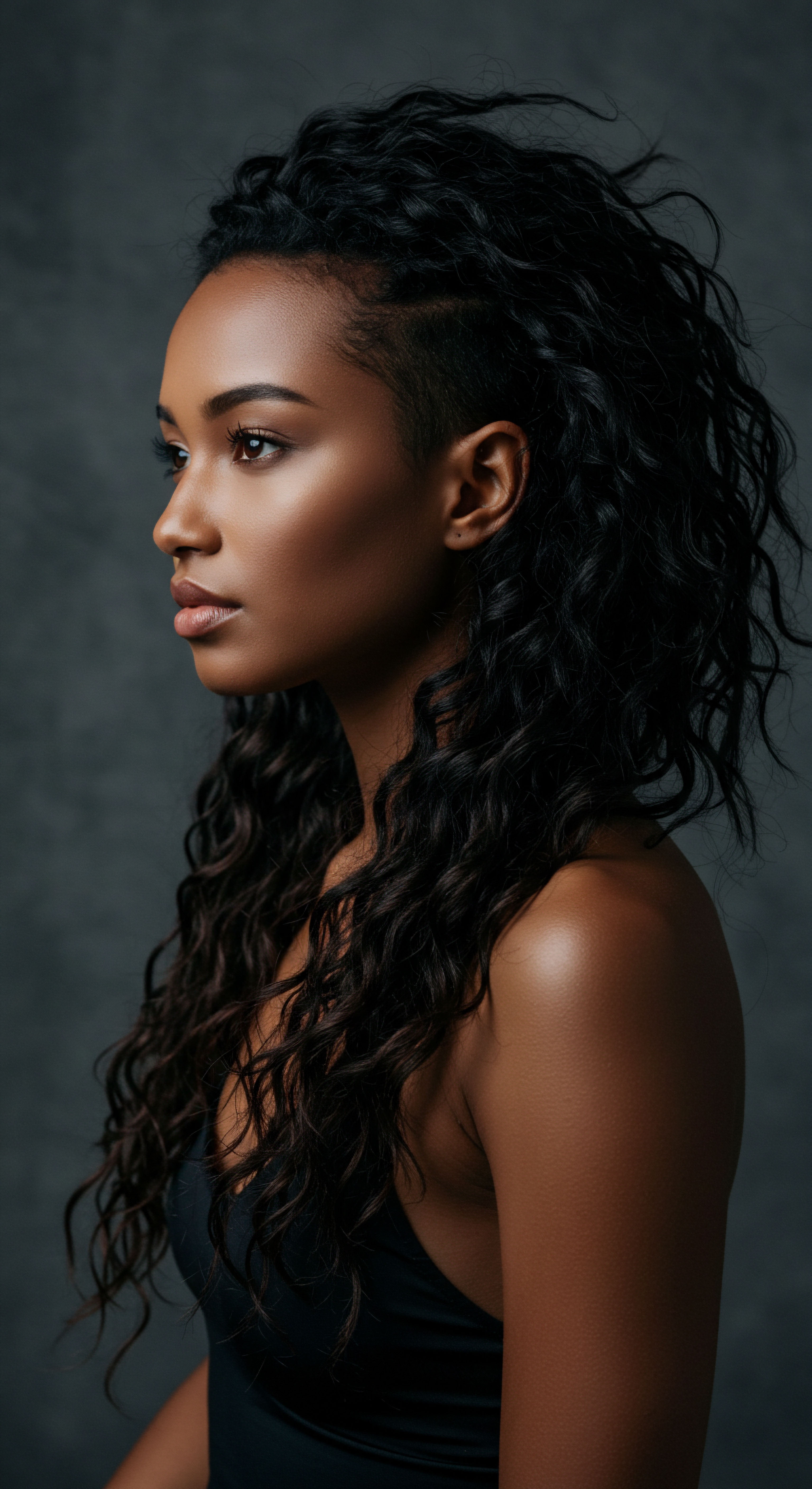
Ritual
Stepping from the foundational insights of hair structure and ancient pigments, we now consider the practical wisdom held within the practices themselves. The application of plant dyes was never a hurried affair; it was a deliberate, often communal act, rich with preparation and patient waiting. How might we distill the essence of these traditional applications, transforming them into a gentle yet effective approach for modern textured hair care? This part of our exploration delves into the methods and the spirit of these rituals, offering guidance that respects both historical practices and contemporary needs.

Preparation Protocols from Past Eras
Traditional plant dye applications often began with meticulous preparation of the hair and scalp. This involved cleansing the hair, sometimes with herbal washes like soapnut (Sapindus mukorossi) or shikakai (Acacia concinna), to remove impurities and prepare the strands for optimal pigment reception. These cleansing agents, unlike many harsh modern shampoos, were gentle, preserving the hair’s natural oils and integrity. The hair might then be conditioned with ingredients like amla or fenugreek, which also contributed to hair health and could influence the final color result by providing a suitable surface for the dye to adhere.
The plant powders themselves, typically henna and indigo, were carefully mixed with specific liquids—often warm water, but sometimes acidic mediums like lemon juice for henna to encourage dye release, or salt for indigo to stabilize its color. The consistency of the paste was crucial, allowing for even application and preventing drips. This thoughtful preparation, from the sourcing of the plants to the mixing of the paste, speaks to a deep respect for the natural materials and the transformative power they held.
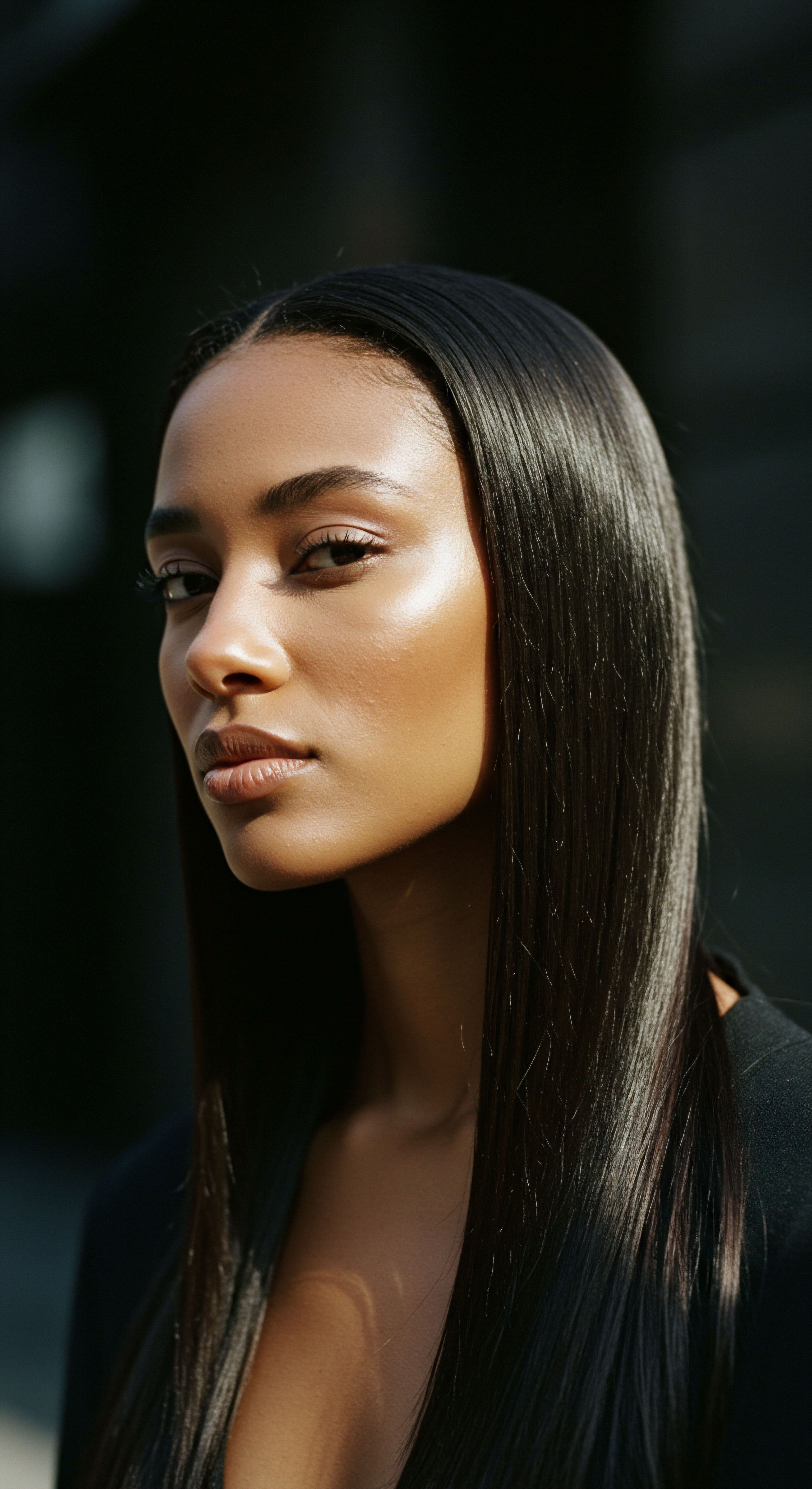
Application Techniques for Textured Hair
The application of plant dyes to textured hair requires particular attention to ensure even coverage and consistent color. The varied curl patterns and density of textured hair mean that simply slathering on a paste might lead to patchy results. Traditional methods often involved sectioning the hair meticulously, applying the paste from root to tip, ensuring every strand was coated. This painstaking process allowed the pigment to fully saturate the hair, especially important for hair with higher porosity where rapid absorption can lead to unevenness if not applied uniformly.
- Sectioning ❉ Divide hair into small, manageable sections to ensure thorough and even application. This prevents missed spots, especially within dense coils or curls.
- Saturation ❉ Apply the plant dye paste generously to each section, ensuring complete coverage from the scalp down to the ends. Textured hair can absorb a significant amount of product.
- Gentle Handling ❉ While applying, treat the hair with care to avoid breakage. Detangling gently before and during application, if necessary, helps distribute the paste without causing stress to the strands.
Once applied, the hair was often covered, sometimes with leaves or cloths, to maintain warmth and moisture, which aids in dye uptake. The waiting period, often several hours, was an integral part of the ritual, a time for the pigments to bind with the keratin. For textured hair, this sustained contact is beneficial, allowing the natural dye molecules, which operate differently from synthetic ones, sufficient time to interact with the hair’s complex structure.
Modern plant dye applications for textured hair find their blueprint in the deliberate, sectioned, and patient methods of ancient cultural practices.

The Conditioning Power of Plant Dyes
Beyond their coloring abilities, many traditional plant dyes were prized for their conditioning properties. Henna, for example, is known to coat the hair shaft, adding a protective layer that can enhance shine, improve manageability, and reduce breakage. This coating effect is particularly beneficial for textured hair, which can be prone to dryness and brittleness. Indigo, while primarily a colorant, also contributes to hair health, often used in conjunction with henna to achieve darker shades while still providing some conditioning benefits.
Other botanicals frequently combined with dyes, such as amla, hibiscus, and bhringraj, are celebrated for their nourishing qualities. Amla, rich in vitamin C and antioxidants, can strengthen hair follicles and contribute to overall hair vitality. Hibiscus is known for its ability to soften hair and promote shine.
These natural additives mean that the dyeing process itself becomes a restorative treatment, a stark contrast to many synthetic dyes that can strip hair of its moisture and leave it feeling dry or damaged. This holistic approach to hair care, where color and conditioning are intertwined, stands as a testament to the wisdom embedded in traditional practices.
| Plant Henna (Lawsonia inermis) |
| Primary Color Reddish-Orange |
| Key Hair Benefits Conditions, strengthens, adds shine, reduces breakage |
| Traditional Uses Hair dye, body art, medicinal applications |
| Plant Indigo (Indigofera tinctoria) |
| Primary Color Blue (mixes to brown/black) |
| Key Hair Benefits Adds depth, can help with shine |
| Traditional Uses Hair dye, textile dye |
| Plant Amla (Emblica officinalis) |
| Primary Color Subtle darkening (no direct dye) |
| Key Hair Benefits Strengthens, conditions, antioxidant-rich |
| Traditional Uses Hair tonic, medicinal uses |
| Plant Hibiscus (Hibiscus rosa-sinensis) |
| Primary Color Reddish highlights (no direct dye) |
| Key Hair Benefits Softens, promotes shine, stimulates growth |
| Traditional Uses Hair wash, conditioning, subtle coloring |
| Plant Many traditional plant dyes offer both color and restorative qualities for hair. |

Relay
From the ancient earth and the careful hand, we move to the deeper currents of scientific understanding and societal context. How do the age-old whispers of plant-based coloring translate into a dialogue with contemporary science, particularly when considering the unique biological and cultural landscape of textured hair? This segment invites us to a more layered inquiry, examining the intricate interplay between botanical chemistry, hair biology, and the complex conversations surrounding heritage and health in the modern world.
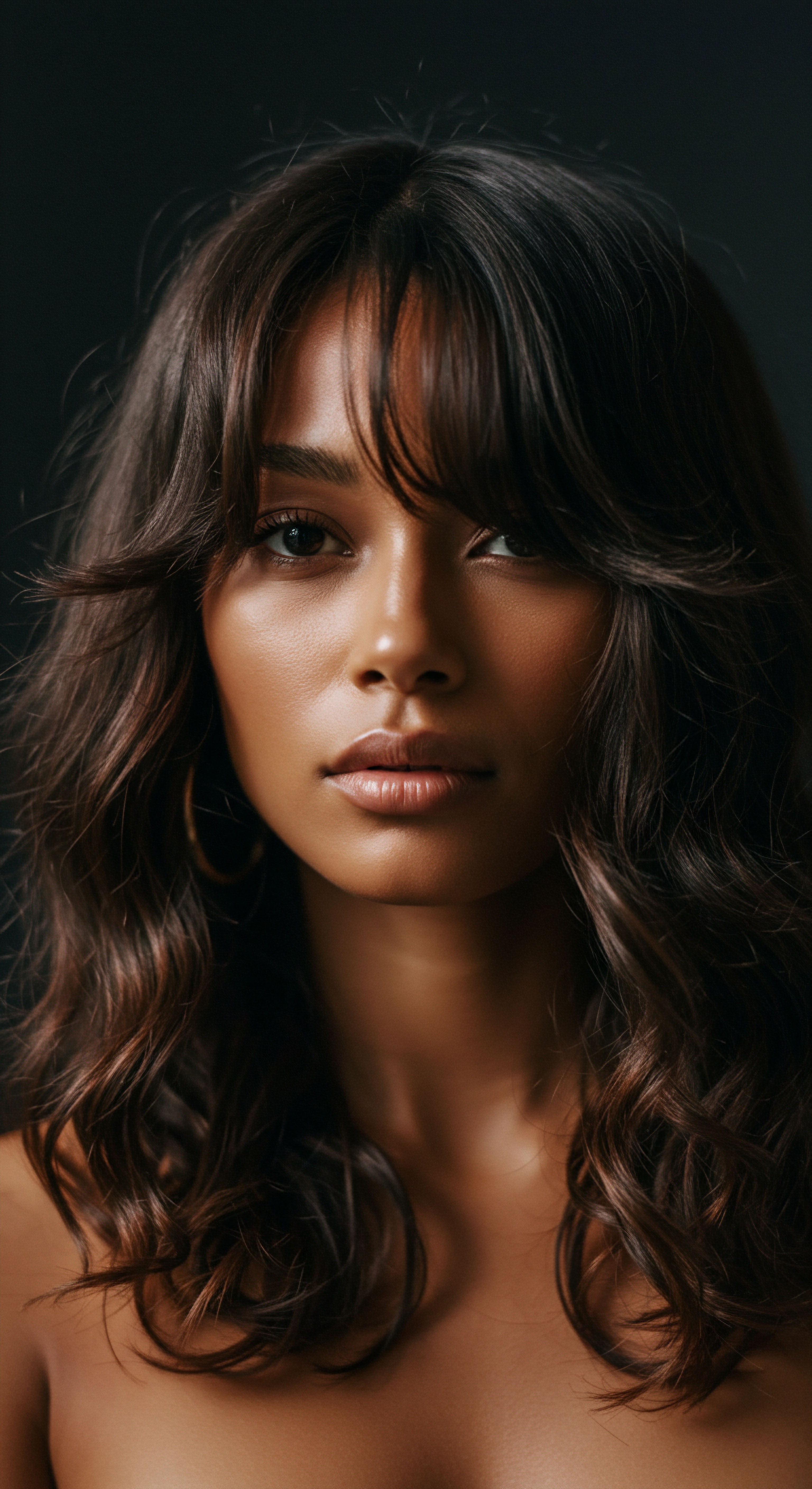
The Chemical Dance of Plant Pigments with Hair Keratin
The interaction of plant dyes with hair is a fascinating chemical process, distinct from the oxidative reactions of synthetic colorants. For instance, lawsone, the active dyeing molecule in henna, is a quinone. When prepared with a mild acid, this molecule becomes available to bond with the keratin protein that forms the hair shaft.
This binding occurs primarily on the outer layers of the hair, effectively staining the cuticle and outer cortex without penetrating deeply enough to alter the hair’s natural melanin. This superficial deposition contributes to henna’s conditioning benefits, as it forms a protective coating.
Indigo, on the other hand, contains a precursor molecule, indoxyl, which, when mixed with water and exposed to air, oxidizes to form the blue indigo pigment. This pigment also binds to the hair’s keratin. When used in conjunction with henna, indigo can create shades ranging from brown to black, depending on the ratios and application method. The beauty of these natural dyes lies in their direct interaction with the hair’s protein structure, minimizing the chemical alterations that can lead to damage and allergic reactions often associated with synthetic counterparts.

Are Modern Chemical Dyes a Hidden Hazard for Textured Hair?
The shift towards natural hair care has been propelled, in part, by a growing awareness of the potential health implications associated with synthetic hair dyes. Many conventional permanent hair dyes rely on para-phenylenediamine (PPD) and similar aromatic amines to achieve lasting color. While effective, PPD is a known sensitizer and a common cause of allergic contact dermatitis.
A notable disparity in PPD sensitization rates has been observed across different populations. A study conducted by the Cleveland Clinic revealed that Black Individuals Exhibited Significantly Higher Rates of PPD Sensitization Compared to White Individuals (10.6% Versus 4.5%, Respectively). Moreover, within the Black community, a striking difference was noted between genders, with Black men showing a sensitization rate of 21.2% compared to 4.2% in Black women. This data point underscores a critical, often overlooked, health consideration for individuals with textured hair who may be more inclined to use darker, PPD-containing dyes.
The implications extend beyond mere cosmetic irritation, touching upon broader public health concerns and the need for safer alternatives. The unique porosity and structural characteristics of textured hair may also influence how readily these sensitizers penetrate the hair shaft and scalp, potentially exacerbating adverse reactions.
A striking health disparity shows Black individuals, particularly men, experience higher rates of PPD sensitization from chemical hair dyes, highlighting an urgent need for safer coloring options.

Navigating Cultural Appreciation in Hair Practices
As interest in plant-based hair dyes grows in contemporary Western contexts, it becomes imperative to approach these traditions with a spirit of deep respect and genuine appreciation, rather than appropriation. Many plant dye practices, particularly those involving henna and indigo, are deeply embedded in the cultural identities, rituals, and historical narratives of communities in South Asia, the Middle East, and Africa. These practices are not simply aesthetic choices; they are expressions of heritage, spirituality, and communal belonging.
For those outside these originating cultures, using plant dyes offers an opportunity to learn and honor the rich traditions that have preserved this knowledge for centuries. This involves understanding the historical context, acknowledging the communities from which these practices originate, and supporting ethical sourcing of botanical ingredients. It means moving beyond a superficial adoption of trends and towards a more meaningful engagement with the stories and wisdom these traditions carry. Such an approach respects the origins of these practices, fostering a space of shared learning and mutual respect.
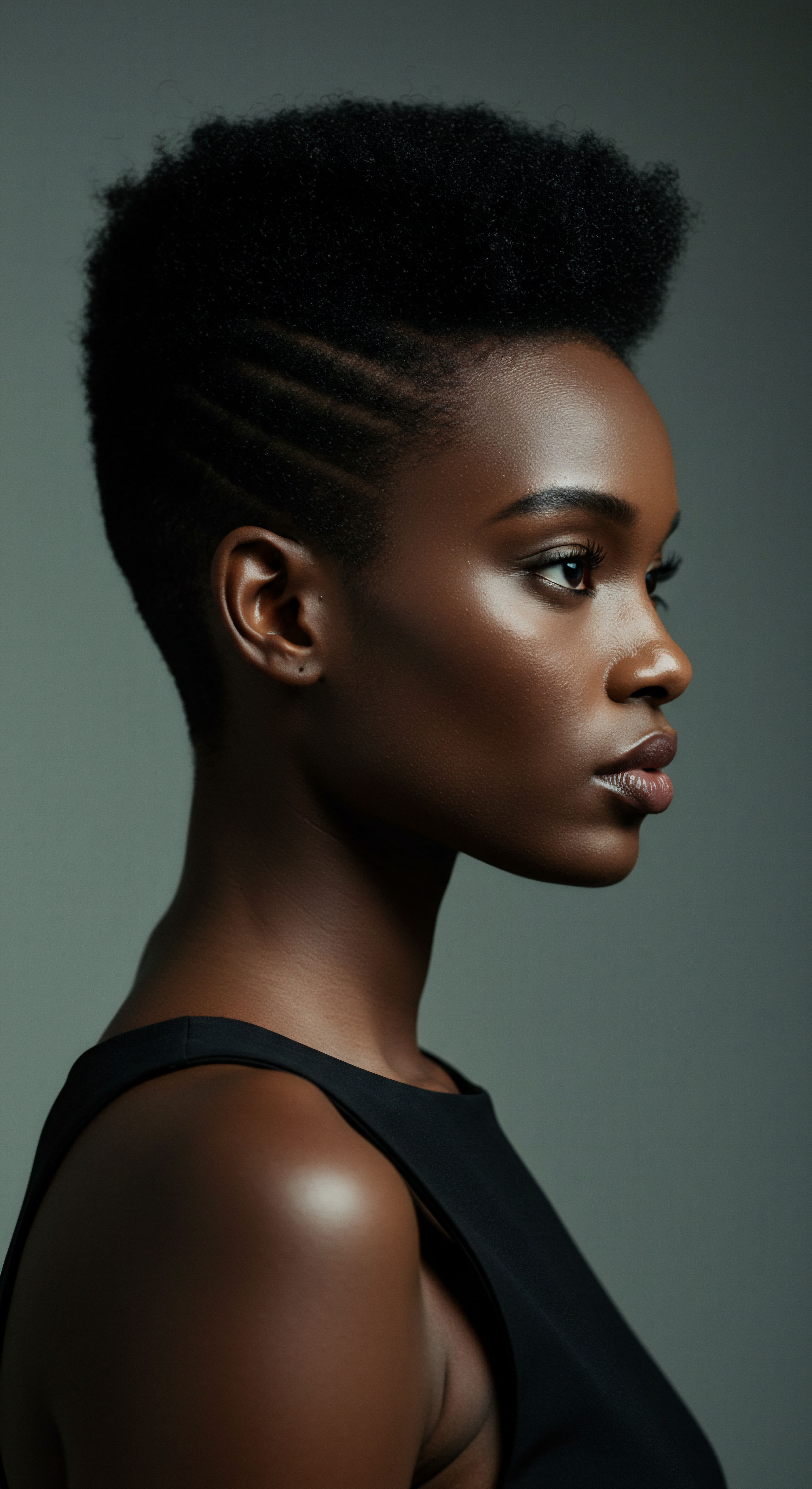
The Future of Plant Dyes for Textured Hair
The convergence of traditional knowledge and modern scientific inquiry presents a promising outlook for plant dye applications on textured hair. Research continues to refine extraction methods for plant pigments, aiming for greater stability and a broader spectrum of shades. Studies on the precise molecular interactions between plant compounds and various hair types, including textured hair, are also contributing to a more scientific understanding of how to optimize application for consistent, lasting results.
This scientific validation of ancient practices not only legitimizes traditional remedies but also opens avenues for creating plant-based hair products that are both effective and safe for textured hair. The emphasis is shifting towards formulations that condition the hair while coloring it, aligning with the holistic hair health philosophy that has long underpinned cultural hair traditions. The growing consumer demand for natural, non-toxic beauty options further propels this movement, making plant dyes a significant part of the future of textured hair care.

Reflection
The journey through cultural hair traditions and their resonance with modern plant dye applications for textured hair reveals a profound interconnectedness. It reminds us that beauty, at its most authentic, often arises from a thoughtful relationship with the earth and the wisdom passed down through generations. To choose a plant-based color is to step into a lineage of care, a gentle act that honors both our strands and the planet. This path invites us to look beyond fleeting trends, seeking instead a deeper, more mindful approach to our personal expression, one that celebrates the unique story of every curl, coil, and wave.
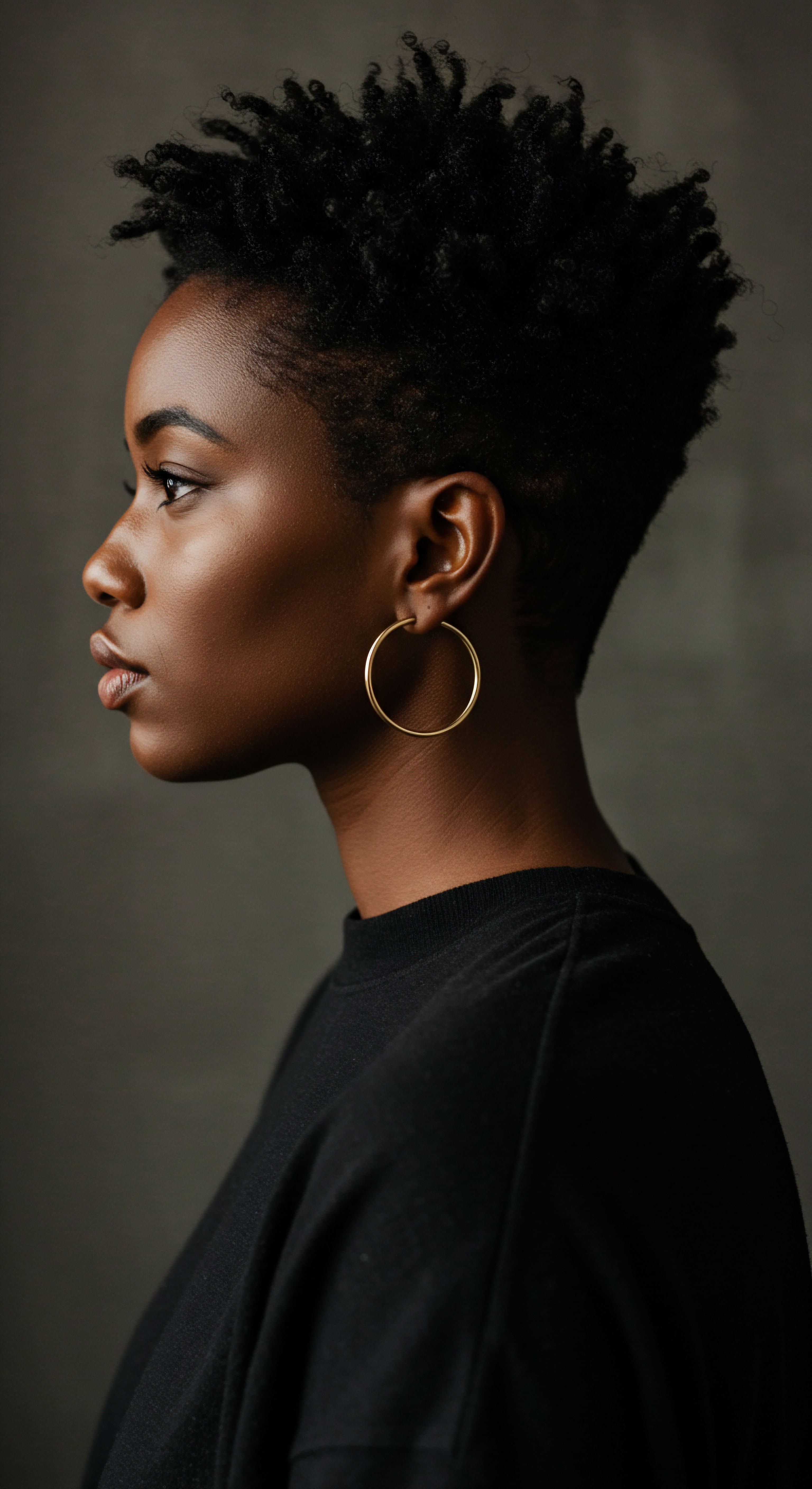
References
- Benzie, I.F.F. & Wachtel-Galor, S. (Eds.). (2011). Herbal Medicine ❉ Biomolecular and Clinical Aspects, Second Edition. CRC Press.
- Gopinath, H. Karthikeyan, K. & Meghana, V. (2020). For the love of color ❉ Plant colors and the dermatologist. Indian Journal of Dermatology, Venereology, and Leprology, 86(6), 622-629.
- Hielscher, S. Fisher, T. & Cooper, T. (2009). The Return of the Beehives, Brylcreem and Botanical! An Historical Review of Hair Care Practices with a view to Opportunities for Sustainable Design. Undisciplined! Design Research Society Conference 2008.
- Joshi, L.S. & Pawar, H.A. (2013). Herbal Hair Dyes ❉ A Review. International Journal of Trichology, 5(3), 140-143.
- Moussa, S. & El-Kashoury, A. (2024). Comparative Study of Chemical vs. Natural Hair Dyes ❉ Safety and Efficacy. Journal of Cosmetology and Trichology, 10(4), 272.
- Rana, A. & Gupta, A. (2022). Risk of Carcinogenicity Associated with Synthetic Hair Dyeing Formulations ❉ A Biochemical View on Action Mechanisms, Genetic Variation and Prevention. Research Journal of Pharmaceutical Technology, 15(5), 2320-2325.
- Sleeman, M. (1981). Medieval Hair Tokens. Forum for Modern Language Studies, 17(4), 322-332.
- Synnott, A. (1987). Shame and Glory ❉ A Sociology of Hair. The British Journal of Sociology, 38(3), 381-413.
- Tang, Y. He, W. Wu, Y. & Cai, R. (2019). Assessing the dyeing efficiency and irritation potentials of plant hair dyes ❉ A multi-analytical in vitro approach. Journal of Cosmetic Dermatology, 18(5), 1500-1507.
- White, S. & White, G. (1995). Slave Hair and African-American Culture in the Eighteenth and Nineteenth Centuries. Journal of Southern History, 61(1), 45-76.